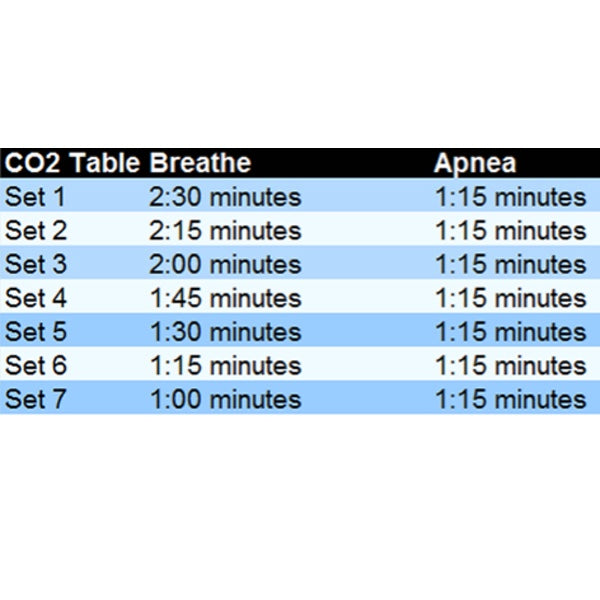
Freedive Training: Cardio, Intervals, CO2 and O2 Tables
Freedive training can be a complicated process for many people. Just about every diver will agree that the best way to train for freediving is to freedive. Nothing beats in-water experience. Unfortunately, not everyone has the time or access to be in the water as much as we would like. Fortunately, there are several ways to train for freedivng outside of being in the water. It should be noted that these training techniques target the same muscle groups and mental skills that are helpful when freediving. Remember, never train in the water without a dive buddy that understands rescue protocol.
Cardio: How Endurance Improves Freediving
There are a lucky group of people that actually enjoy cardio. Those people are widely considered crazy by the rest of us. The rest of us just need to grin and bear it when we are doing cardio and recognize that it is helping us. The biggest benefit of cardio in freediving is building up endurance. There is nothing worse than getting in the water in a strong current and struggling to be able to dive because you are running out of energy on the surface. Implementing a regular cardio routine has untold benefits to allowing you to enjoy a long day in the water. Some great cardio activities that help also build up your leg muscles are swimming, biking, and of course running.
Intervals: Improving Recovery and Anaerobic Exercise
If there is anything that could possibly be more unpleasant to train than cardio, it's intervals. It takes that feeling you get from cardio like your heart and lungs are going to explode and magnifies it by 10. For those of you unfamiliar with interval workouts, the more familiar term is sprints. "Sprints" can be applied to more than just running. Take any of the previously mentioned cardio exercises, go faster than you thought you could possibly go for a short period of time, and try not to pass out when you can't go any further.
If you are running, you can do distance intervals or timing intervals. Runt to a light pole, walk to the next light pole, or run 30 seconds then walk 60 seconds. For swimming, you can be swimming hard for a lap, then recover for a lap. This process is designed to spike your heart rate and helps train your body to recover from anaerobic exercises quicker. Anaerobic exercise is any exercise that uses more oxygen than your body can replace in the amount of time the exercise continues. You can understand how this type of exercise could be helpful in training for freediving.
CO2 and O2 Tables: Training the Mind to Accept Discomfort
CO2 and O2 tables are useful tools in getting your body used to holding its breath. They eachh work in different ways towards this goal.
CO2 tables focus on getting a build up of CO2 in your body. This helps your body become accustomed to that discomfort that makes your mind think you need to breathe. It is not a lack of oxygen that makes you think you need to breathe, but the build up of CO2 in your lungs after your cells use up oxygen. You may have plenty of useable oxygen in your lungs, but if you have a buildup of CO2 in your lungs, you'll feel desperate to breathe. By regularly exposing your body to increased levels of CO2, your body's mental image of "normal" is pushed a little further. The method of doing this is typically to hold your breath consecutively for a consistent amount of time and to reduce the amount of time you breathe up before each breath hold.
O2 Tables work on a similar principle but in an inverse way. O2 tables allow for a more gradual buildup of CO2 by having a consistent breathe up, and holding your breath for longer and longer intervals.
